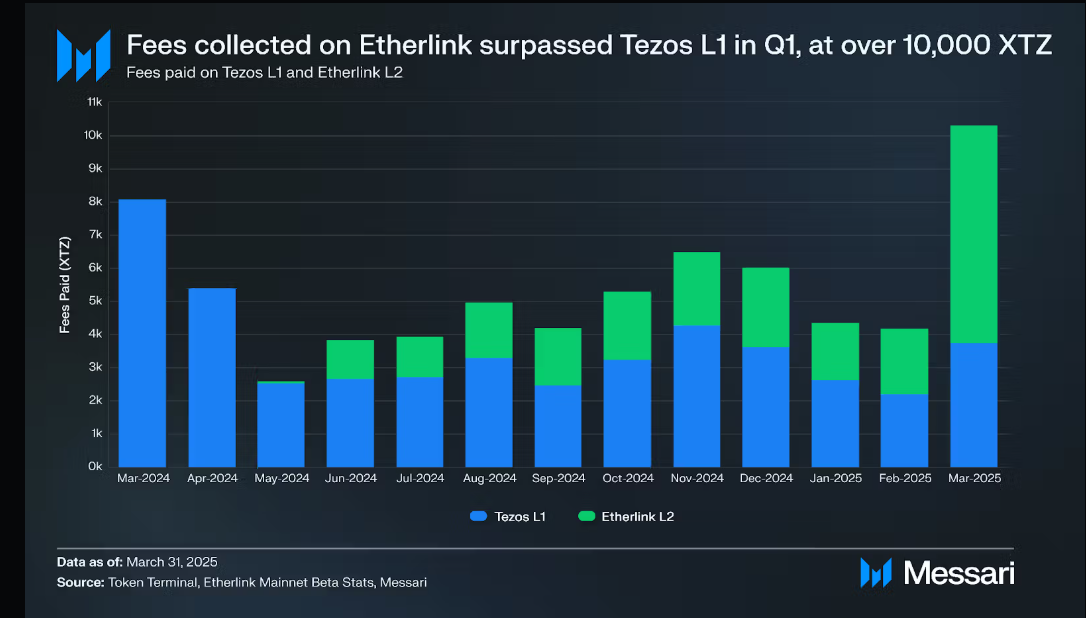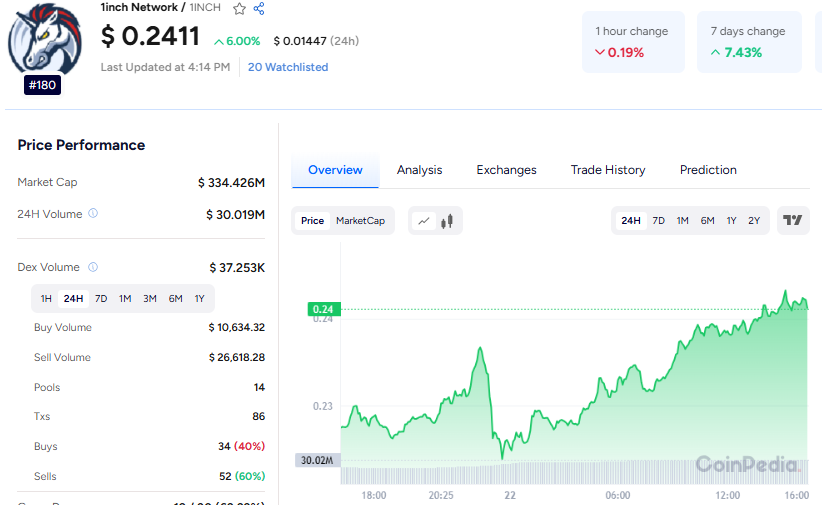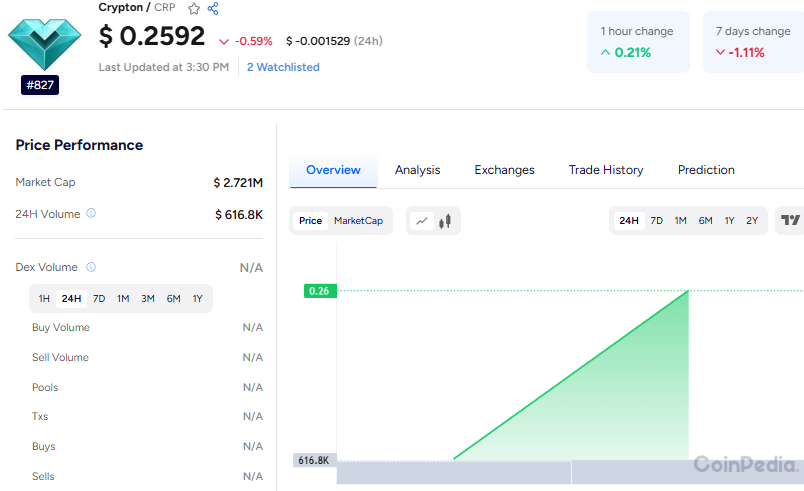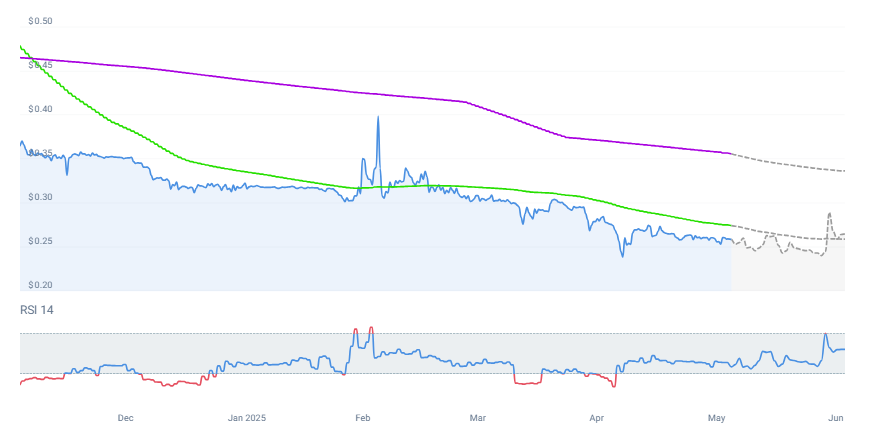
 Beginner’s Guide to DeFi dApp Development
Beginner’s Guide to DeFi dApp Development
DeFi reshaped how we interact with financial services by delivering decentralized peer-to-peer transactions along with dapps under decentralized application platforms. Ethereum blockchain-powered DeFi dApp development deliver decentralized lending services along with borrowing features. And also trading capabilities and yield farming through smart contracts.
Your journey to develop a DeFi dApp requires familiarizing yourself with the essential components. Such components include smart contracts and frontend interface and wallet integration and blockchain APIs, and token standards (e.g., ERC-20). You can build DeFi dApps through the integration of smart contracts, frontend interface, wallet functions, blockchain APIs, and token standards (such as ERC-20). Decentralized exchanges and lending platforms, together with staking protocols and synthetic assets, make up the list of most popular DeFi use cases.
The development of DeFi dApps requires adherence to the following key steps.
Define Your Use Case
Determine your dApp's financial service functionality before designing the smart contract operations. It’s te crucial part of DeFi dapp development.
Choose a Blockchain
Ethereum remains a well-known blockchain, but BNB Chain and Polygon, and Solana provide better scalability along with lower fees as alternatives.
Develop Smart Contracts
Blockchain developers should write smart contracts in the Solidity language using Remix IDE and Hardhat, and OpenZeppelin software. Solana dApp creators require Rust for their blockchain development.
Build the Frontend
The user interface requires integration between blockchain smart contracts through the implementation of Ethers.js/Web3.js with React.js or Vue.js.
Integrate Wallets & Nodes
Should integrate wallet protocols (such as MetaMask and WalletConnect) and implement blockchain node connections (including Infura and Alchemy operating services).
Test Thoroughly
The launch requires a complete set of security audits for smart contracts, along with user experience tests to ensure everything functions without issues.
Deploy & Launch
Push your dApp contracts to mainnet deployment while hosting your frontend and listing your application, and activating marketing initiatives.
The process of DeFi dApp development faces important hurdles. It includes security flaws in addition to elevated transaction costs and complications with regulations. Security combined with scalable performance and seamless user interaction will create trust which drives user adoption.
Through the combination of Remix together with Hardhat and MetaMask, and The Grap,h users can develop secure DeFi dApps that are functional after successful testing. First, launch a minimum viable product then expand according to user feedback. Then, plan for progressive DeFi dapp development growth to address increasing demand.
To contact:
Whatsapp: +91 9361357439
Email: sales@innblockchain.com

 Can Tezos Surge Past $1 Amid 23% Monthly Gain?
Can Tezos Surge Past $1 Amid 23% Monthly Gain?

Tezos (XTZ) showing a 23.14% gain over the past month. It has a market cap of $693.25 million, an unlocked market cap of $708.83 million, and a 24-hour trading volume of $19.95 million, representing 2.87% of its fully diluted valuation of $706.69 million, with a total supply of 1.06 billion XTZ. Tezos price prediction suggests a potential surge to $9.36 by 2030.
XTZ Price Outlook

The total market cap stands at $3.58 trillion, showing a 12.14% change in the last 24 hours. Tezos (XTZ) is currently trading at $0.6620. The token hit an all-time high of $9.12 and an all-time low of $0.3505 .Despite a steep-92.74% drop from its ATH, Tezos has rebounded strongly with an 88.87% rise from its ATL.
On May 18, 2025, Tezos co-founder Arthur Breitman spotlighted tokenizing real-world assets like uranium through platforms such as Uranium.io, which hit $6.7M TVL in Q1.

Tezos is emerging as a leader in compliant multi-chain asset infrastructure. Meanwhile, Tezos L1 transaction fees dropped 23.3% QoQ, while Etherlink—Tezos’ first EVM-compatible smart rollup—surged 54.1%, surpassing L1 activity. Etherlink’s rapid growth highlights its cost-efficiency and scalability as a Layer 2 solution.
Tezos activated its 17th protocol upgrade, Quebec, on January 20, 2025, enhancing performance and refining its economic model. This upgrade was developed collaboratively by Nomadic Labs, TriliTech, and Functori, continuing Tezos’ tradition of decentralized self-amendment.
Tezos Price Prediction
Tezos (XTZ) is poised for growth, with forecasts indicating it could reach $10.02 by 2025, fueled by increasing adoption, key partnerships, and its eco-friendly Proof of Stake (PoS) consensus.
Looking toward 2030, XTZ is expected to trade within a range of $8.50 to $10.14, averaging around $8.81, supported by rising institutional interest and expanding blockchain use cases.

 Order Book Mechanics Behind a dYdX Clone: How Does It Work?
Order Book Mechanics Behind a dYdX Clone: How Does It Work?
If you've used dYdX before or want to create something like it, it's important to know how the order book functions. It's the core of your decentralized exchange; without it, the entire system collapses.
Let's simplify it now.
In a dYdX clone, the order book records all buy and sell requests. When someone trades, they don't instantly exchange tokens. They issue an order to buy or sell at a particular price. The system then finds another user who wants to make the opposite trade to complete the order.
Here’s what makes it special: Unlike AMMs like Uniswap that use shared funds, a dYdX-type exchange works like a traditional exchange but on a blockchain. Orders are sorted by price and when they were made. The best buy and sell prices are always changing, showing the current market situation.
By early 2025, dYdX is managing over $1 billion in daily trading, largely thanks to its strong order book system. It offers traders more control, smaller price differences, and better ways to find the right price – all important to experienced users.
If you want to create a platform with a dYdX clone, keep in mind that it’s not just about replicating how it looks. You have to replicate how the matching engine works, how it makes things fast, and how the order book that's not on the blockchain talks safely to the blockchain for finishing trades. The true speed comes from these hidden details.
By hiring the right development firm, you can build your dYdX clone platform without compromising your innovations and ideas.

 Order Book Mechanics Behind a dYdX Clone: How Does It Work?
Order Book Mechanics Behind a dYdX Clone: How Does It Work?
If you've used dYdX before or want to create something like it, it's important to know how the order book functions. It's the core of your decentralized exchange; without it, the entire system collapses.
Let's simplify it now.
In a dYdX clone, the order book records all buy and sell requests. When someone trades, they don't instantly exchange tokens. They issue an order to buy or sell at a particular price. The system then finds another user who wants to make the opposite trade to complete the order.
Here’s what makes it special: Unlike AMMs like Uniswap that use shared funds, a dYdX-type exchange works like a traditional exchange but on a blockchain. Orders are sorted by price and when they were made. The best buy and sell prices are always changing, showing the current market situation.
By early 2025, dYdX is managing over $1 billion in daily trading, largely thanks to its strong order book system. It offers traders more control, smaller price differences, and better ways to find the right price – all important to experienced users.
If you want to create a platform with a dYdX clone, keep in mind that it’s not just about replicating how it looks. You have to replicate how the matching engine works, how it makes things fast, and how the order book that's not on the blockchain talks safely to the blockchain for finishing trades. The true speed comes from these hidden details.
By hiring the right development firm, you can build your dYdX clone platform without compromising your innovations and ideas.

 1INCH Price Prediction: Will it Surge Past $0.30 This Month?
1INCH Price Prediction: Will it Surge Past $0.30 This Month?

1inch Network (1INCH) with a 24-hour price increase of 6.27%. It has a market cap of $335.19 million, a fully diluted valuation (FDV) of $362.54 million, and a 24-hour trading volume of $29.99 million—accounting for 8.9% of its market cap.
Backed by strong growth potential, 1INCH price prediction estimates suggest the token could climb as high as $5 by 2030, driven by increasing adoption and DeFi expansion.
1inch Price Overview

1inch Network trading at $0.2421. While it's down 97.20% from its all-time high, the token has surged 61.96% from its all-time low—indicating a notable recovery trend. In the past 24 hours, 1INCH recorded $29.9 million in trading volume, reflecting active market interest.
1INCH is showing relatively stable price behavior, with volatility at a moderate 4.34%, signaling neutral market fluctuations.
Additionally, the Relative Strength Index (RSI) at 55.67 places the token in a balanced zone—neither overbought nor oversold—suggesting steady momentum in the current market conditions.
1inch Network Broadens DeFi Reach with Strategic Expansion
- 1inch, a leading decentralized finance (DeFi) aggregator, has officially expanded to Linea, ConsenSys' zkEVM Layer 2 network.
- This strategic move aims to deliver deeper liquidity access and significantly lower transaction fees, reinforcing 1inch’s status as a major force in the DeFi space.
- By integrating Linea, 1inch boosts scalability and streamlines user experience across the Ethereum ecosystem.
1INCH Price Prediction: A Promising Path Ahead
The 1inch Network continues to evolve, with major upgrades underway—including zkSync integration, strategic collaborations with Base and Mastercard, and enhanced functionality through its improved Fusion mode. These developments focus on faster transactions, lower costs, and greater real-world usability of DeFi services.
Price forecasts for 2025 place 1INCH between $0.362 and $0.56, with the potential to climb as high as $3.69 under favorable market conditions. With rising adoption and constant innovation, 1INCH holds strong potential for long-term growth.

 Defi Staking Platform Development: The Easiest Way To Earn
Defi Staking Platform Development: The Easiest Way To Earn
I've officially joined the ranks of people looking to make money with minimal effort. Can you believe how much excitement is going on in this industry? It's DeFi staking!
At first, I thought staking was just a fancy way of saying “saving” in crypto. But was I wrong? It’s a lot more fun than that! You lock up your tokens, and suddenly, they start earning rewards as if they were working a side job. Meanwhile, I’m lounging in my pajamas, watching cat videos, and checking my wallet every five minutes.
Then things took an interesting turn. I had this golden idea! Why not start my staking platform? I could be in charge, offer great returns, and even give it a fun name like Stakezilla.
But after about ten minutes of Googling smart contracts, my brain gave up. The technology was too complicated, and the risks felt too high.
So, like any smart and simple person would do, I decided to reach out to the experts! A Defi staking platform development company that knows the ins and outs of building. These experts build platforms that run smoothly, boast high-quality security, user-friendly designs, and all the complicated backend stuff I don’t want to deal with. They make starting a staking platform feel as easy as ordering a pizza.
If you’ve been dreaming of starting a staking project but don’t want to get bogged down in the complexities of development, these companies are the way to go.
Has anyone here actually started one? Have you used a platform that delivers? Or have you been on a risky bet like I did? Let’s talk about it!
To contact:
Whatsapp: +91 9361357439
Email: sales@innblockchain.com

 Defi Staking Platform Development: The Easiest Way To Earn
Defi Staking Platform Development: The Easiest Way To Earn
I've officially joined the ranks of people looking to make money with minimal effort. Can you believe how much excitement is going on in this industry? It's DeFi staking!
At first, I thought staking was just a fancy way of saying “saving” in crypto. But was I wrong? It’s a lot more fun than that! You lock up your tokens, and suddenly, they start earning rewards as if they were working a side job. Meanwhile, I’m lounging in my pajamas, watching cat videos, and checking my wallet every five minutes.
Then things took an interesting turn. I had this golden idea! Why not start my staking platform? I could be in charge, offer great returns, and even give it a fun name like Stakezilla.
But after about ten minutes of Googling smart contracts, my brain gave up. The technology was too complicated, and the risks felt too high.
So, like any smart and simple person would do, I decided to reach out to the experts! A Defi staking platform development company that knows the ins and outs of building. These experts build platforms that run smoothly, boast high-quality security, user-friendly designs, and all the complicated backend stuff I don’t want to deal with. They make starting a staking platform feel as easy as ordering a pizza.
If you’ve been dreaming of starting a staking project but don’t want to get bogged down in the complexities of development, these companies are the way to go.
Has anyone here actually started one? Have you used a platform that delivers? Or have you been on a risky bet like I did? Let’s talk about it!
To contact:
Whatsapp: +91 9361357439
Email: sales@innblockchain.com

 How to Kick Off a P2P Crypto Exchange Using a P2P Crypto Exchange Script?
How to Kick Off a P2P Crypto Exchange Using a P2P Crypto Exchange Script?
P2p crypto exchange platforms are preferred by users and businesses for their benefits and the security that surpasses centralized exchanges, and gain momentum in 2025, and it's easy to launch with the best platform provider in the niche. All you have to do is follow the steps below
Step #1: Do Your Homework & Plan Your Biz
Start by checking out the crypto market trends, looking at what other platforms are doing, and figuring out the regulations in your area. Nail down your business model, what coins you'll support, user roles, and how you’re going to make money (like trading fees or premium features).
Step #2: Create a Smooth User Experience
Focus on making an easy-to-use interface for peer-to-peer trading. Make sure users can quickly post buy/sell offers, start trades, chat securely, and move around the platform without any hassle.
Step #3: Build the P2P Crypto Exchange Script
Use a customizable P2P exchange script that has all the must-have features like support for multiple cryptocurrencies, built-in wallets, smart contract escrow, strong KYC/AML tools, and solid security. Tailor the script to fit your brand and goals.
Step #4: Thorough Testing & Quality Checks
Before you launch, make sure to test everything thoroughly — that means checking functionality, load capacity, and security — to make sure your platform is free of bugs, can handle growth, and is safe from attacks.
Step #5: Launch, Promote & Keep It Going
Get your P2P exchange live, run some smart marketing campaigns, and grow your user community. Keep providing updates, customer support, and performance boosts to build trust and keep the growth coming.
P2p crypto exchange can be done within 30 days. Wonder how well it's possible with the P2p crypto exchange script. By contacting a p2p cryptocurrency exchange platform provider like Trioangle offers you can have the platform within months. Get to know here: https://www.trioangle.com/p2p-cryptocurrency-exchange-script/ , Whatsapp: +91 9361357439
Email: sales@innblockchain.com

 Which is the Best white label cryptocurrency exchange software?
Which is the Best white label cryptocurrency exchange software?
As a business looking to enter the growing crypto market, we quickly realized that building a crypto exchange from scratch would not only be expensive but also incredibly time-consuming.
That’s when we came up with the idea of using white label cryptocurrency exchange software! A ready-made solution that would allow us to launch our own branded exchange quickly and efficiently.
However, it’s important to note that not all white label crypto exchange software options are created equal. From a business perspective, the key factors to consider are reliability, security, and scalability.
We needed a platform that could handle a growing user base, support a variety of cryptocurrencies, and comply with essential regulations like KYC and AML.
After all, the last thing you want is for your business to become the next headline in a crypto disaster!
The best white label crypto exchange should offer customization options to ensure that the platform reflects your brand and meets the needs of your users. Also, it’s important to have ongoing technical support, even the best software needs help sometimes.
If you are thinking about starting a crypto exchange, I recommend choosing a white label solution that combines robust technology with user-friendly business features. It’s all about striking the right balance between quick market entry and long-term sustainability. I would love to hear about your experiences or recommendations for the best white label cryptocurrency exchange software!
To contact:
Whatsapp: +91 9361357439
Email: sales@innblockchain.com

 Crypton Price Prediction : Can CRP Hit Past $1 ?
Crypton Price Prediction : Can CRP Hit Past $1 ?

Crypton (CRP), with a 6.57% monthly gain. It holds a market cap of $2.71 million and a 24-hour trading volume of $621.97K, reflecting a sharp 193.42% surge in activity.
Crypton price prediction suggests the token could climb as high as $1.77 by the end of 2025, driven by growing interest, limited supply, and increasing market activity.
CRP Price

Crypton (CRP) stands at $0.2592, marking a sharp 85.44% decline from its all-time high. However, it also reflects an impressive 7,303.65% rebound from its all-time low, signaling strong recovery momentum.
With an RSI of 37.72, CRP remains in neutral territory, indicating neither overbought nor oversold conditions at the moment.
Crypton Technical Outlook

Crypton's 200-day Simple Moving Average (SMA) is projected to decline in the coming weeks, reaching approximately $0.336814 by June 18, 2025. Meanwhile, the 50-day SMA is expected to hover near $0.259212 around the same date, indicating short-term consolidation.
As for market momentum, the Relative Strength Index (RSI) currently stands at 41.69, signaling a neutral trend.
Crypton Network Activity
- Due to Crypton’s privacy-focused architecture, detailed on-chain metrics like transaction volume and active wallet counts are not readily available on mainstream blockchain explorers. Instead, the Utopia network operates within a closed ecosystem that processes all transactions internally, prioritizing user anonymity.
- The network maintains consistent CRP token circulation through its built-in mining mechanism, which incentivizes users to run Utopia clients. Notably, around 80% of the total CRP supply is already in circulation, with the token’s maximum supply capped at 1 billion, supporting a controlled emission model.
CRP Price Prediction
CRP is projected to trade between $0.0546 and $1.00 by the end of 2025, showing significant upside potential. Long-term, CRP's performance will closely align with the growth of the Utopia P2P network and overall market conditions.
Сервис поддержки клиентов работает на платформе UserEcho


